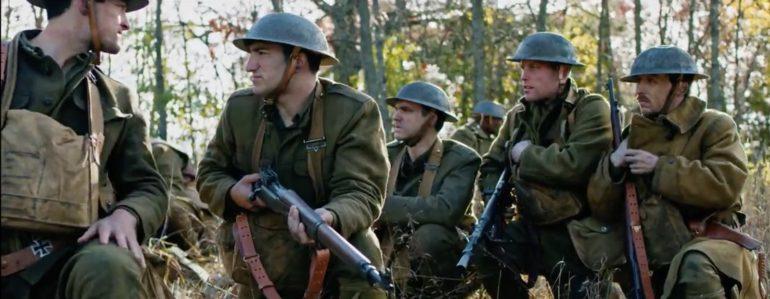‘The Great War’: Film Review
By Tomris Laffly
LOS ANGELES (Variety.com) – Coming to theaters across the nation soon, there is a powerful World War I picture, shot with the respectable ambition of simulating a single unbroken take. The bad news is, Steven Luke’s cliché-ladling combat picture is not that refined movie (called “1917”). What we have instead is “The Great War,” a start-to-finish inept battleground film set in the waning days of WWI around the Armistice of Nov. 11, 1918, so clumsy in its handling of racism within the American Expeditionary Forces that it makes some of the racial mishaps of “Green Book” seem subtle in comparison.
With a bewildering “let’s set our differences aside and work together” attitude throughout, Luke injects the film with a generically sappy score whenever a racist white trooper realizes his bigotry and offers to share his water with a black comrade as a symbol of his newfound decency or a teary-eyed white lieutenant doles out a story about brave men of a different race who once saved his life. You could cringe, but this movie (which would have been considered dated and offensive even decades ago) is so tone-deaf in its feelgood white perspective that you’d almost want to save your energy for something that earns it. Needless to say, Luke’s day-and-date release won’t be making a splash during its theatrical or digital runs, especially when Sam Mendes’ “1917” is just around the corner as the far superior war movie alternative of the year.
If you miss the title cards and can’t situate yourself initially, have no worries: You will know that you’re in France soon enough, as cinematographer Joseph Loeffler’s restless camera will helpfully offer a shot of a plate of fluffy croissants to alleviate your disorientation. (Though according to the film’s IMDb credits, the actual locations were somewhere in Illinois and Minnesota, which makes sense, because the scenery looks nothing like France.) The story that apparently blends fiction with loose truths follows the shell-shocked Lt. William Rivers (Bates Wilder, coming off strangely amateurish like the rest of the cast) and the team of soldiers he guides to liberate a lost platoon of African American troopers, the “Buffalo Soldiers,” trapped behind the enemy lines of the Germans.
Aided by a soldier (Hiram A. Murray) who managed to escape those trenches, the “Saving Private Ryan”-esque rescue effort gets put in motion to both boost the general morale and address some publicity concerns. Following the mission from the sidelines are Ron Perlman’s U.S. Gen. John J. Pershing and Billy Zane’s fictional Col. Jack Morrison, both stuck in the pages of a disjointed script trying to figure out what to do with their parts. There are plenty of face-off arguments, noisy shootouts and fist fights along the way, and the one thing they all have in common is their general rookie feel. The weapons look fake, the stiff action sequences play like poor re-enactments, and you frequently wonder how anyone managed to keep a straight face while firing off some embarrassingly simple-minded lines of dialogue. Even the bright red, corn-syrupy blood splattered around looks like it’s from a different decade of cinema.
Generously speaking, some of these shortcomings — such as lighting that serves to make every daytime hour look like the golden magic hour — can perhaps be blamed on the film’s low budget, evident in pretty much every sequence. But the overall shortage of finesse signals something more troubling: the lack of taste and vision both on the page and behind the camera. How else could you explain the one customary female character that appears out of nowhere and gives a lecture about her choice to be involved in the war, paying lazy lip-service to feminism? Or all the slow-motion segments that aim for heartstrings but score giggles instead? Luke is clearly a history enthusiast looking for present-day resonance in the past. But not every personal ambition has to be transposed into a movie if the skills and resources to support it simply are not there.

